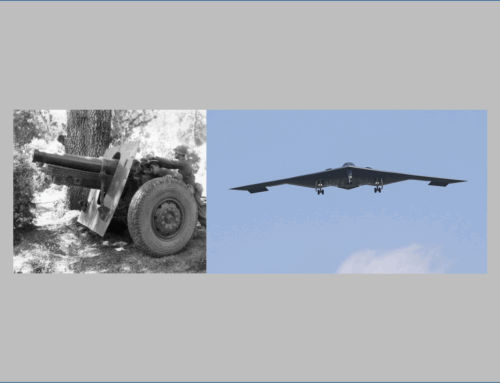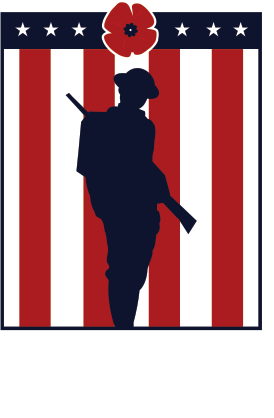A World War One Artifact Rescued
Published: 12 December 2024
By Marvin Barrash
Special to the Doughboy Foundation website

DC memorial drawing and photo 800 framed
(Left) A drawing of the District of Columbia World War I Memorial, from 1935, signed by architect Frederick H. Brooke. (Right) Photo of the completed Memorial in 1931.
Over the years, my research has taken place in archives where I spent untold hours going through boxes after boxes of original documents. These primary sources were treasure troves that provided essential clues and keys that unlocked some of the mysteries of the past. Libraries, some with rare book rooms or special collections, were also essential in piecing together details of historic events. I never knew for certain what I would find or how important those documents, books or images would prove to be.
One place that I never expected to find important papers from the past would be in a thrift store. Contrary to that, a copy of the Declaration of Independence was actually found behind a $4.00 picture that was purchased by someone at a thrift store, but that’s such a rarity. My visit to a thrift shop in Easton, Maryland, a year ago, did indeed produce an item of historical note, not as significant as a founding document, but a great find, just the same.
My wife and I have occasionally shopped at various thrift stores. I typically look at the shelves filled with books hoping to find something that might relate to a subject that I’m researching or otherwise worth reading. My wife looks for decorative items for the house.
It was on such a shopping trip, last year, to a thrift store, in Easton, Maryland, that a treasure from the past was found. I cannot take credit for the find. As I wandered about the shop, my wife approached me with a slightly large framed item in her hands. I thought, perhaps, that this would be a painting of a floral arrangement or something that she might want a second opinion about. I could have not been more mistaken.
What my wife handed to me was something that I didn’t expect to see. Behind the framed glass was an aged architectural rendering of a domed structure with columns, against a background of trees. My first thought was this was not the work of an amateur and second, that this was not of Greek antiquity.
I soon realized that this was a drawing of the District of Columbia War Memorial. The confirmation of this was actually a simple matter. This historical piece of art was clearly signed, “To Daniel C. Long from Fredk. H. Brooke” and was dated, “1935.”
Frederick H. Brooke was an architect based in Washington, D.C. He his associate architects, Horace W. Peaslee and Nathan C. Wyeth, designed the District of Columbia War Memorial. All three were veterans of World War I.
Frederick Hiester Brooke (1876-1960) was born in Birdsboro, Pennsylvania. He studied architecture at Yale University, the University of Pennsylvania, and the Ecole des Beaux-Arts in Paris before coming to Washington. Aside from his work on the District of Columbia War Memorial, he designed many notable structures in the Washington, D.C. area.
Daniel Caldwell Long (1902-1980) was born in Washington, D.C. He was a self-employed civil engineer in Washington. Years later became involved with property management. He relocated to Easton, Maryland. He was active in the U.S. Coast Guard Auxiliary.
The design for the District of Columbia War Memorial was of a circular, peristyle Doric open-air temple of white marble with fluted Corinthian columns, a stepped base, and a domed roof. The Commission of Fine Arts chose the site for the memorial, on flat, marshy land in a grove of trees in West Potomac Park in the District of Columbia. The memorial was constructed in 1931 out of white marble quarried in Danby, Vermont. Funds for the project were provided entirely by public subscription.
The memorial is 45′-4″ in diameter at the bottom ledge. Its overall height is approximately 47′ from the sidewalk to the top of the dome. It was designed to be large enough to accommodate an eighty-piece band.
Inscribed on the memorial’s frieze is:
A MEMORIAL TO THE ARMED FORCES OF THE DISTRICT OF
COLUMBIA WHO SERVED THEIR COUNTRY IN THE GREAT WAR
On the recessed panel, immediately to the west of the north stairs is inscribed:
THE NAMES OF THE MEN AND WOMEN FROM THE DISTRICT OF COLUMBIA WHO GAVE THEIR LIVES IN THE WORLD WAR ARE HERE INSCRIBED AS A PERPETUAL RECORD OF THEIR PATRIOTIC SERVICE TO THEIR COUNTRY. THOSE WHO FELL AND THOSE WHO SURVIVED HAVE GIVEN TO THIS AND TO FUTURE GENERATIONS AN EXAMPLE OF HIGH IDEALISM COURAGEOUS SACRIFICE AND GALLANT ACHIEVEMENT
On recessed panel, immediately to the east of the north stair, is inscribed:
THIS MEMORIAL WAS ERECTED THROUGH THE VOLUNTARY
SUBSCRIPTIONS OF THE PEOPLE OF WASHINGTON. IT WAS
DEDICATED ON ARMISTICE DAY NINETEEN HUNDRED AND
THIRTY-ONE BY HERBERT HOOVER PRESIDENT OF THE
UNITED STATES. WITHIN THIS CORNER-STONE ARE
RECORDED THE NAMES OF THE TWENTY-SIX THOUSAND
WASHINGTONIANS WHO WHEN THE UNITED STATES ENTERED
THE WORLD WAR ANSWERED THE CALL TO ARMS AND
SERVED IN THE ARMY NAVY MARINE CORPS AND COAST GUARD.
Engraved on twenty-four panels within the memorial’s base are the names, alphabetically arranged, of the 499 D.C. residents who lost their lives during World War I. Interspersed among the name panels are panels with circular, bas-relief medallions:
- Great Seal of the United States
- Seal of the District of Columbia
- An eagle clutching two arrows
- Seal of the United States Coast Guard
- Fasces with double-headed axe in front of a shield, six stars, and the inscription “THE GREAT WAR FOR CIVILIZATION” (the design used on the reverse side of the World War Victory Medal)
- Seal of the United States Navy
- Seal of the United States Marine Corps
On July 20, 1931 a copper box was sealed and placed within a carved niche on the inner face of the cornerstone by Maj. Gen. Anton Stephan, a member of the memorial commission. A list containing the names of the 26,048 District of Columbia residents who served in the war was placed in the box. The list was typed on cotton-fiber paper; the special 100-percent kind used for U.S. currency. Included in the box was a set of the building plans for the memorial, a copy of that day’s Evening Star newspaper, and some coins and paper currency of that year.
The District of Columbia War Memorial was dedicated on Armistice Day, November 11, 1931. The Washington Herald reported, “President Hoover came to dedicate the new memorial at the exact hour battle guns were hushed in Europe thirteen years ago.” “Color guards from all the armed services and from the veterans organizations of the world war were grouped about the memorial. The United States Marine Band, led by John Philip Sousa, played “The Stars and Stripes Forever.” The exercises were broadcast to the nation.”[1]
Eighty-nine years after he presented his sketch to Daniel C. Long, Frederick H. Brooke’s hand-drawn rendering of the District of Columbia War Memorial shows signs of age, but nevertheless continues to offer a great window to the past. Today, that piece of history occupies an important place on my home-office wall next to my framed copy of an engineering drawing of the U.S.S. Cyclops. Will future trips to a thrift store yield such gifts? Time will tell.

Group at ceremony dedicating the District of Columbia War Memorial showing, left to right, from 2nd person: Edith Wilson, Charles F. Adams, Helen Taft, and Patrick J. Hurley; Lou and Herbert Hoover 3rd and 2nd from right, Armistice Day. (Library of Congress master-pnp-hec-36500-36587u)

Dedication ceremony for the District of Columbia War Memorial showing military band on Armistice Day, 1931, Washington, D.C. (Library of Congress master-pnp-hec-36500-36588a)
— ♦ —
[1] The Washington Herald, Thu, Nov 12, 1931 ·Page 2









